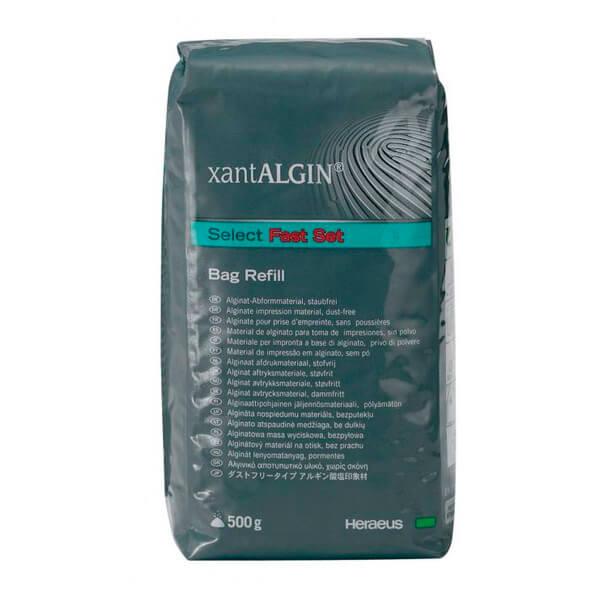
XantALGIN Select: Dental Alginate (500 gr) - Kulzer
powder -free alginate for high precision dental impressions:
- Smell of Mint.
- Light green colour.
- Creamy consistency: particularly suitable for sensitive patients.
- High elasticity and tear resistance.
- Completely homogeneous, no lumps.
- Content: 1 bag of 500 gr.
Similar product recommended:
 You have 15 days for free return.
You have 15 days for free return.powder -free alginate for high precision dental impressions:
- Smell of Mint.
- Light green colour.
- Creamy consistency: particularly suitable for sensitive patients.
- High elasticity and tear resistance.
- Completely homogeneous, no lumps.
- Content: 1 bag of 500 gr.
Similar product recommended:
19,07 € 15,25 €
55,89 € 44,71 €
402,04 € 321,63 €
Description
XantALGIN Select Alginato Dental
Dust-free alginate with excellent detail reproduction. XantALGIN Select is indicated as a universal material for general dentists and orthodontists. It is completely homogeneous with no lumps. Reproduces at least a 50 micron line consistently. Suitable for documentation, analysis and planning models as well as for opposing jaw and working models.
Features of XantALGIN Select Dental Alginate:
- Mint scent.
- Light green colour.
- Dust-free.
- Creamy consistency: particularly suitable for sensitive patients.
- High elasticity and tear resistance.
- They have a long shelf life without preservatives.
- They do not contain any chemical disinfectants and are kind to skin and gums.
- Processing time: 1:00 min.
- Time in the mouth: 1:00 min.
- Final curing: 2:00 min.
- Mixing ratio (powder: water): 21 g: 50 ml.
- Content: 1 Bag of 500 gr.
XantALGIN Select Alginate Applications:
Alginate situation impressions have a wide range of indications including fully dentate, partially dentate and completely edentulous jaws. Anatomical models made from alginate impressions can serve several functions.
- As study models: they reproduce the current state of the dentition. They can be used, among others, to monitor the current situation during orthodontic treatment or to compare the state of the dentition before and after prosthetic treatment.
- As analysis models: articulated anatomical models can be used to check the occlusion. Occlusal interferences can be detected more easily on articulated models than directly in the mouth. Any extensive grinding settings can be initially simulated in the analysis model.
- As planning models: Anatomical models are generally essential for extensive prosthetic restorations. Different treatment options can be simulated on the model and allow the dentist, together with the patient, to select the correct treatment for the individual case.
- As an opposing model: The anatomical model reproduces the occlusal contour of the opposing dentition when fabricating indirect restorations or other treatment appliances that are fabricated on a model.
- As working models: anatomical models cast from an alginate impression are used to fabricate e.g. partial plaster dentures, simple acrylic dentures retained by clasps or removable orthodontic appliances. Working models can also be used to manufacture customised impression trays and bite blocks, or for repairs.
Questions and answers
There are no questions yet. Be the first to ask one!
You need to be logged in to ask questions. Login
